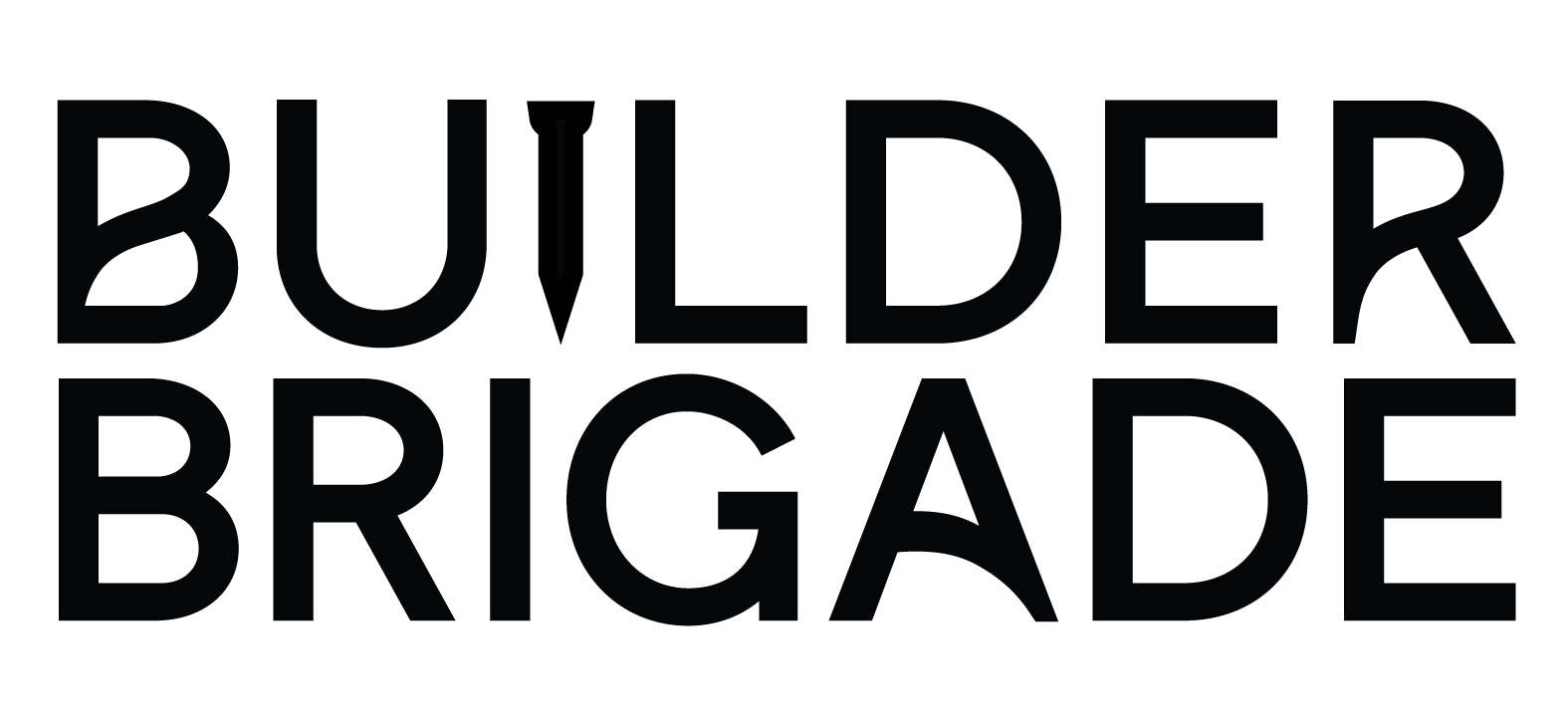Whether you're just starting to consider the idea or already watching your foundation take shape, understanding the sequence of events in home construction will help you stay organized and make informed decisions. Below are the steps and phases of construction:
1. Land Clearing and Preparation
The process begins with preparing your land for construction. Clearing the land involves removing trees, rocks, shrubs, and any other debris that might obstruct the build. This is not just about aesthetics; it’s about ensuring the site is safe, accessible, and suitable for a foundation.
After clearing, grading comes into play. This process levels the ground, ensuring that your home will sit on a stable surface and that water drains away properly. If the terrain is uneven, you might need excavation or even retaining walls to create a flat and stable building surface.
A final grade will also take place but at the end of the build, just before the Sod is laid down.

2. Foundation Construction
Once the land is ready, the next critical step is the foundation. The foundation provides the structural base for the entire home, and its integrity is vital for the long-term durability of the house. There are three common types of foundations: slab-on-grade, crawl space, and basement. The choice depends on factors like climate, the type of soil, terrain, and your budget.
-
Slab-on-Grade: A solid concrete base poured directly onto the ground.
-
Crawl Space: An elevated foundation built on piers that allows access to plumbing and utilities beneath the house.
-
Basement: A deeper foundation that creates additional living or storage space.

3. Rough Framing: The Skeleton of the House
The rough framing is when the house starts to resemble a structure. During this phase, workers build the walls, floors, and roof framework, essentially constructing the skeleton of your home. This is when you’ll see your home's layout coming together, with walls going up, roof trusses installed, and openings for windows and doors framed.
It’s crucial during this stage to communicate any changes or special requests, such as adding custom under-stair storage, changes to closet or room dimensions, or framing for larger windows. Additionally, exterior sheathing (like plywood) is applied, providing stability and an outside shell for the house. The structure is now ready for the more detailed systems that will follow.

4. Roofing
With the frame complete, the roof is installed to "dry in" the house. This means that the house is protected from weather elements, ensuring the interior is safe from the elements during construction. Roof installation includes laying underlayment, adding flashing, and covering it with your chosen roofing material, such as shingles, metal, or tiles.

5. Doors and Windows Installation
Once the roof is in place, doors and windows are installed. Installing doors and windows also helps with energy efficiency, especially if you choose high-quality, energy-efficient options. Windows and doors contribute to the style and functionality of your home, and their placement can enhance natural light, ventilation, and overall comfort.
6. Rough-In Phase: HVAC, Plumbing, Electrical, and Low-Voltage Wiring
During this phase, the home’s major systems are put in place. The order of installation can vary but typically follow this sequence:
-
HVAC (Heating, Ventilation, and Air Conditioning): Ductwork, vents, and returns are installed to ensure proper airflow and a comfortable temperature throughout the house. If you're planning for zoned heating or cooling, the system is set up now, ensuring you can control temperatures in different rooms.
-
Plumbing: Pipes for water supply, drainage, and venting are installed, and gas lines are connected if your home uses natural gas for heating or cooking.
-
Electrical: Electricians run wires for outlets, switches, light fixtures, and the main electrical panel. This is the point where you can consider extras like under-cabinet lighting, and additional outlets.
-
Low-Voltage Wiring: This includes the installation of wiring for systems like internet, cable, and security cameras. These elements, while often overlooked, can dramatically improve the convenience and functionality of your home.

7. Insulation
Insulation is added to your home to regulate its temperature and improve energy efficiency. It’s installed in the walls, ceilings, and sometimes even floors. Insulation also serves to reduce noise, making your home quieter and more comfortable.
Depending on your preferences or local climate, you can choose from various insulation types, such as fiberglass, foam, or cellulose. For added privacy, soundproofing insulation like Rockwool can be installed in interior walls around bedrooms or bathrooms.

8. Siding Installation
With the frame and insulation in place, the exterior of the house is finished with siding, brick, or stone. The siding not only protects the structure from the elements but also gives the house its exterior appearance. You can choose from a variety of materials, such as vinyl, wood, or fiber cement. Decorative elements, such as trim or accents, are often added at this stage to increase curb appeal and enhance the overall aesthetic.
9. Drywall Installation
Drywall is hung on the interior walls and ceilings, transforming the space from an open frame to defined rooms. Once the drywall is in place, seams are taped and finished for a smooth, even surface. This is a critical stage, as any imperfections in the drywall will show once the house is painted. The goal is a seamless, polished finish that prepares the interior for paint.
There are levels 5 stages of drywall finishing, ranging from Level 0, which is completely unfinished, to Level 5, which is a fully smooth and flawless surface ready for high-gloss paint or critical lighting conditions; typically, Level 4 and Level 5 are considered fully finished for most residential applications.

10. Trim Work and Painting
Now that the basic structure of the house is in place, it’s time to focus on details that bring the space together. Trim work, such as baseboards, crown molding, and door casings, is installed to give the home a more polished, finished look. Once the trim is in place, it’s time to apply primer and paint. The walls, ceilings, and trim are all painted to match your desired color palette, and the home starts to feel more personalized and livable.
11. Kitchen Cabinets and Countertops
The kitchen is one of the most important areas in your home, and it takes shape during this step. Cabinets are installed, followed by countertops made of materials like quartz, granite, or marble. Not only do countertops add functionality to the kitchen, but they also contribute to its overall style and appeal. Choose materials that are durable and easy to maintain while reflecting your personal taste.

12. Flooring Installation
Whether you choose hardwood, tile, vinyl, or carpet, flooring is a key element in defining the look and feel of each room. You’ll want to select materials that are not only visually appealing but also durable and appropriate for each space's function. For example, hardwood may be perfect for living areas, while tile is a great choice for bathrooms and kitchens.

13. Finish Electrical, Stairs, and Plumbing Fixtures
At this stage, the home is nearly ready for occupancy:
-
Finish Electrical: Electricians install light fixtures, switches, and outlets. The system is tested to ensure everything works as expected, and safety is verified.
-
Finish Stairs: Staircases are completed with treads, risers, and railings, and you can choose finishes that match your home's style.
-
Plumbing Fixtures: Sinks, faucets, toilets, and showerheads are installed. The plumber ensures everything is in working order and checks for any leaks.

14. Utilities Final Connections
The home’s utility systems are now connected to the local grid, including water, gas, electricity, and sewer. This step ensures that everything is fully operational and ready for everyday use. The utility company will usually handle this connection.
15. Appliance Installation
With the major fixtures in place, appliances like the refrigerator, stove, dishwasher, and washer/dryer are installed. These are essential elements in making your home fully functional. Builders connect these appliances to ensure they are operational, and any necessary adjustments are made.

16. Exterior Concrete Work (Driveways and Walkways)
The final outdoor touches include the installation of concrete for driveways, walkways, and any patios. This not only improves the home’s functionality and curb appeal but also ensures safe and easy access to your home. Concrete is poured and smoothed to create an attractive, durable surface.
17. Punch-Out and Final Walkthrough
Before you officially move in, there’s a final phase known as the "punch-out” or “Blue Tape Walkthrough”. Oftentimes the builder will provide you a roll of blue painters tape to mark areas that need attention. I have a Blue Tape Walkthrough Checklist to follow along and ensure all areas are inspected.
The builder will address any minor repairs or touch-ups that may be needed. If anything needs adjusting, now is the time to request changes.

18. Keys to the House!
After the final walkthrough and all inspections are complete, the builder hands over the keys. You’re officially ready to move in and begin enjoying your new home!
Ready to Build Your Dream Home?
Building a house is a detailed process, but understanding these steps can make it less intimidating. Want more tips to make your home building project as smooth as possible? Download The Ultimate Home Building Checklist and take the guesswork out of the process!
Get The Checklist Here!








